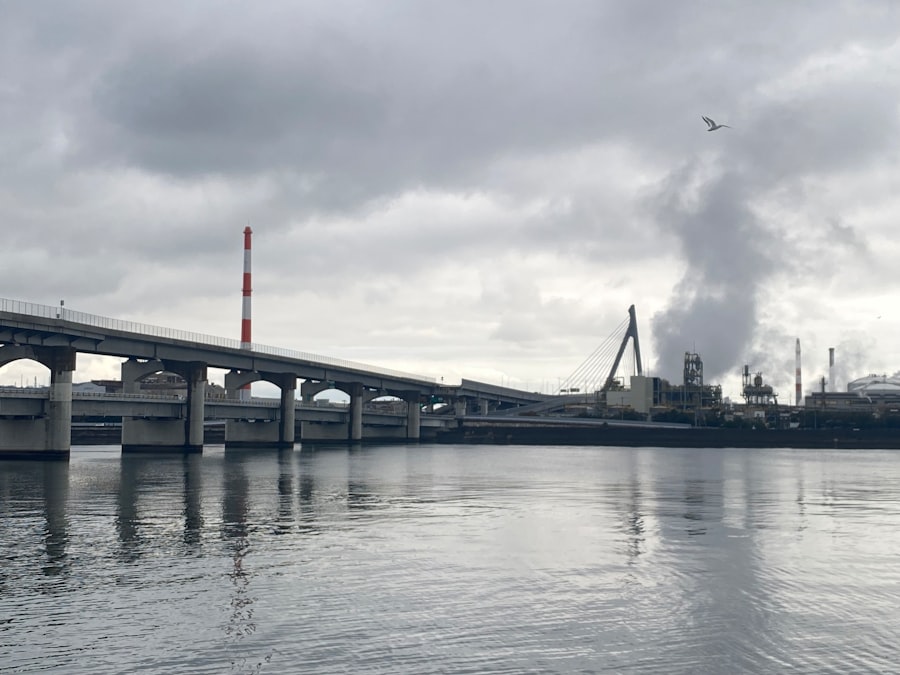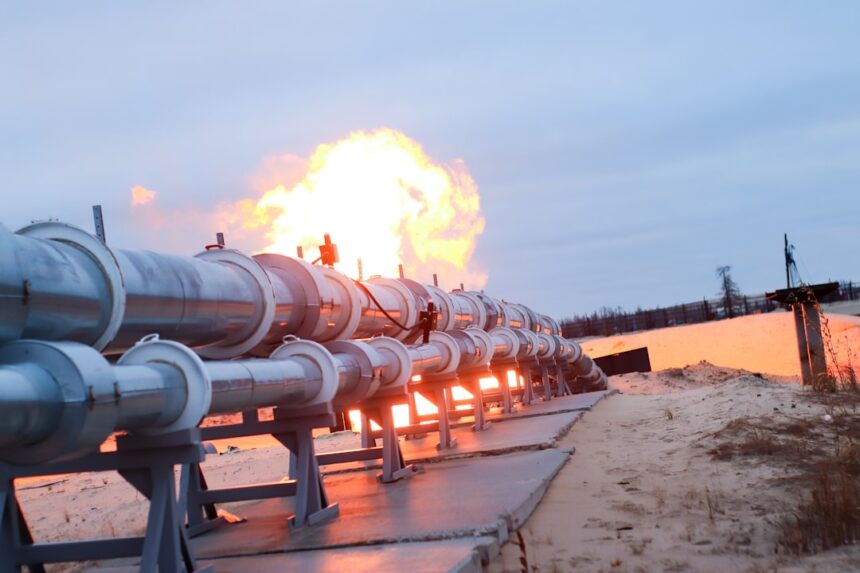The Nord Stream explosion, which occurred in late September 2022, sent shockwaves not only through the Baltic Sea but also through the global community, raising questions about energy security and geopolitical tensions. The incident involved a series of underwater explosions that damaged the Nord Stream pipelines, which are crucial for transporting natural gas from Russia to Europe. In the aftermath, scientists and researchers turned their attention to the seismic signatures generated by these explosions.
Seismic signatures are critical in understanding the nature of such events, as they provide valuable data that can help differentiate between natural occurrences and human-induced activities. The analysis of these signatures is essential for establishing a clearer picture of what transpired during the Nord Stream incident. The significance of studying seismic signatures extends beyond mere academic interest; it has profound implications for international relations, energy policies, and environmental safety.
By examining the seismic data associated with the Nord Stream explosion, experts can glean insights into the scale and impact of the event, as well as its potential ramifications for future energy infrastructure. This article delves into the intricacies of seismic signatures, their detection and analysis, and the broader implications of understanding such events in the context of global security and environmental stewardship.
Key Takeaways
- Nord Stream Explosion Seismic Signatures are important for understanding and detecting man-made seismic events.
- Seismic signatures can be analyzed to differentiate between natural and man-made seismic events.
- Identifying characteristics of an explosion seismic signature is crucial for uncovering man-made events.
- Collaboration with international agencies is essential for effective seismic signature analysis and prevention.
- Future research and development in seismic signature detection is crucial for improving detection and prevention methods.
Understanding Seismic Signatures
Seismic signatures are essentially the unique patterns produced by seismic waves as they travel through different geological materials. These waves can be generated by various sources, including earthquakes, landslides, and explosions. Each source produces a distinct signature based on factors such as the energy released, the depth of the event, and the geological characteristics of the surrounding area.
Understanding these signatures is crucial for seismologists and geophysicists who seek to interpret seismic data accurately. In the case of explosions, seismic signatures typically exhibit sharp, high-frequency waves that can be distinguished from the lower-frequency waves associated with natural seismic events. The analysis of these signatures involves sophisticated techniques that allow scientists to identify the source and magnitude of an explosion.
By studying the characteristics of seismic waves, researchers can determine not only the location of an explosion but also its intensity and potential impact on surrounding environments. This understanding is particularly relevant in contexts like the Nord Stream explosion, where distinguishing between natural seismic activity and man-made events is vital for assessing responsibility and consequences.
Detecting and Analyzing Seismic Signals

The detection of seismic signals relies on a network of seismometers strategically placed around the globe. These instruments are designed to capture minute vibrations in the Earth’s crust, allowing scientists to monitor seismic activity in real-time. When an event such as an explosion occurs, it generates seismic waves that propagate through the Earth, reaching nearby seismometers and triggering recordings.
The data collected is then analyzed using various algorithms and models to interpret the nature of the event. Analyzing seismic signals involves several steps, including filtering out background noise, identifying wave types, and determining wave velocities. Advanced computational techniques are employed to enhance signal clarity and extract meaningful information from complex datasets.
In the context of the Nord Stream explosion, researchers utilized this technology to analyze seismic data recorded by nearby stations. By comparing these signals with known patterns from previous explosions, they were able to ascertain critical details about the event’s magnitude and location.
Identifying Characteristics of an Explosion Seismic Signature
| Characteristics | Description |
|---|---|
| Peak Amplitude | The maximum amplitude of the seismic wave generated by the explosion. |
| Duration | The length of time that the seismic signal persists, typically measured in seconds. |
| Frequency Content | The range of frequencies present in the seismic signature, often indicating the type of explosion. |
| Arrival Time | The time it takes for the seismic waves to reach a specific location, providing information on the distance from the explosion. |
| Signal-to-Noise Ratio | The ratio of the amplitude of the seismic signal to the background noise, affecting the detectability of the explosion. |
Explosion seismic signatures possess distinct characteristics that set them apart from other types of seismic events. One of the most notable features is the presence of a sharp initial spike in amplitude, which corresponds to the moment of detonation. This spike is followed by a series of oscillations that gradually decrease in amplitude over time.
The frequency content of explosion signatures is typically higher than that of natural events, making them easier to identify amidst background noise. Additionally, explosion signatures often exhibit a specific waveform shape that can be analyzed to determine various parameters such as depth and energy release. The duration of the seismic waves can also provide insights into the size of the explosion; larger explosions tend to produce longer-lasting waves due to their greater energy output.
By examining these characteristics in detail, researchers can build a comprehensive profile of an explosion’s impact, which is essential for understanding events like the Nord Stream incident.
Differentiating Between Natural and Man-Made Seismic Events
One of the primary challenges in seismology is differentiating between natural and man-made seismic events. Natural events such as earthquakes or volcanic eruptions produce seismic waves that have distinct patterns influenced by geological factors. In contrast, man-made events like explosions generate different waveforms due to their abrupt energy release and specific characteristics related to their environment.
To distinguish between these two types of events, seismologists employ a combination of techniques, including waveform analysis and statistical modeling. By comparing recorded seismic data with established patterns from both natural and artificial sources, researchers can make informed judgments about the origin of a given signal. In cases like the Nord Stream explosion, this differentiation is crucial for attributing responsibility and understanding the broader implications for regional stability.
Case Study: Nord Stream Explosion Seismic Signature

The Nord Stream explosion serves as a compelling case study for examining seismic signatures associated with man-made events. Following the incident, multiple seismological stations in proximity to the Baltic Sea recorded significant seismic activity that was later attributed to underwater explosions. Researchers analyzed these recordings to identify key characteristics indicative of an explosive event.
The analysis revealed sharp spikes in seismic amplitude consistent with explosion signatures, along with high-frequency waveforms that distinguished them from natural seismic activity in the region. By correlating this data with other available information—such as satellite imagery and eyewitness accounts—scientists were able to construct a detailed narrative surrounding the incident. This case study not only highlights the importance of seismic signature analysis but also underscores its role in informing public discourse on energy security and geopolitical tensions.
Implications of Uncovering Nord Stream Explosion Seismic Signatures
Uncovering the seismic signatures associated with the Nord Stream explosion carries significant implications for various stakeholders. For governments and policymakers, understanding the nature of such incidents is crucial for developing effective responses to potential threats against critical infrastructure. The ability to accurately attribute responsibility based on seismic data can influence diplomatic relations and inform national security strategies.
Moreover, insights gained from analyzing these signatures can contribute to broader discussions about energy dependence and security in Europe. As nations grapple with energy transitions and geopolitical challenges, understanding vulnerabilities in energy infrastructure becomes paramount. The Nord Stream incident serves as a stark reminder of how fragile these systems can be and highlights the need for robust monitoring mechanisms to detect potential threats before they escalate into crises.
Utilizing Seismic Signatures for Future Detection and Prevention
The lessons learned from analyzing seismic signatures related to the Nord Stream explosion can inform future detection and prevention strategies for similar incidents. By enhancing monitoring capabilities around critical infrastructure—such as pipelines and power plants—governments can establish early warning systems that detect unusual seismic activity indicative of potential threats. Investing in advanced seismological technology and fostering collaboration among international agencies can further enhance detection efforts.
By sharing data and expertise across borders, nations can create a more comprehensive understanding of seismic risks associated with energy infrastructure. This proactive approach not only aids in preventing future incidents but also fosters greater cooperation among countries facing similar challenges.
Collaboration with International Agencies for Seismic Signature Analysis
Collaboration among international agencies is essential for effective seismic signature analysis and response strategies. Organizations such as the United Nations Office for Disaster Risk Reduction (UNDRR) and various regional seismological networks play a vital role in facilitating information sharing and capacity building among member states. By pooling resources and expertise, countries can enhance their ability to monitor seismic activity related to both natural disasters and man-made events.
In addition to fostering collaboration among governments, partnerships with academic institutions and research organizations can drive innovation in seismic monitoring technologies. Joint research initiatives can lead to improved methodologies for analyzing seismic signatures, ultimately enhancing global preparedness for potential threats against critical infrastructure.
Future Research and Development in Seismic Signature Detection
The field of seismic signature detection is ripe for future research and development as technology continues to advance. Innovations in machine learning and artificial intelligence hold promise for improving signal processing techniques, enabling faster and more accurate identification of seismic events. These advancements could revolutionize how scientists analyze large datasets generated by seismometers around the world.
By integrating multiple data sources, researchers can develop more comprehensive models that account for various factors influencing seismic activity. This holistic approach will be crucial for addressing complex challenges related to energy security and environmental safety in an increasingly interconnected world.
The Importance of Uncovering Nord Stream Explosion Seismic Signatures
In conclusion, uncovering the seismic signatures associated with the Nord Stream explosion is not merely an academic exercise; it has far-reaching implications for global security, energy policy, and environmental stewardship. By understanding these signatures, researchers can provide valuable insights into man-made events that threaten critical infrastructure while also informing strategies for prevention and response. As nations navigate an increasingly complex geopolitical landscape marked by energy dependence and vulnerability, leveraging advancements in seismic signature analysis will be essential for safeguarding infrastructure against potential threats.
The lessons learned from this incident underscore the importance of collaboration among international agencies, investment in research and development, and proactive measures to enhance monitoring capabilities. Ultimately, a comprehensive understanding of seismic signatures will play a pivotal role in shaping a safer and more secure future for all nations reliant on critical energy infrastructure.
In the wake of the Nord Stream explosion, researchers have been diligently analyzing seismic signatures to better understand the event’s underlying causes and implications. A related article that delves into the broader geopolitical and environmental impacts of such incidents can be found on the website “In The War Room.” This article provides a comprehensive overview of the strategic significance of energy infrastructure and the potential vulnerabilities that come with it. For more insights, you can read the full article by visiting In The War Room.
WATCH THIS! The FSB’s Hidden War on Europe’s Pipelines
FAQs
What are seismic signatures?
Seismic signatures refer to the patterns of seismic waves recorded by seismographs following an event such as an earthquake, explosion, or other seismic activity. These signatures can provide valuable information about the nature and location of the event.
What is the Nord Stream pipeline?
The Nord Stream pipeline is a natural gas pipeline system that runs from Russia to Germany, passing through the Baltic Sea. It consists of two parallel lines and is a key component of Europe’s energy infrastructure, providing a direct and secure supply of natural gas to the region.
What caused the explosion in the Nord Stream pipeline?
The cause of the explosion in the Nord Stream pipeline is not specified in the article. However, it is mentioned that the explosion resulted in seismic signatures that were detected and analyzed by researchers.
How were the seismic signatures of the Nord Stream explosion detected?
The seismic signatures of the Nord Stream explosion were detected using seismographs, which are instruments that measure and record the vibrations of the Earth caused by seismic waves. These instruments are commonly used to monitor and study seismic activity, including explosions and earthquakes.
What information can be obtained from analyzing the seismic signatures of the Nord Stream explosion?
Analyzing the seismic signatures of the Nord Stream explosion can provide valuable information about the nature and location of the explosion. This analysis can help researchers and authorities understand the cause of the explosion and its potential impact on the pipeline and the surrounding environment.




